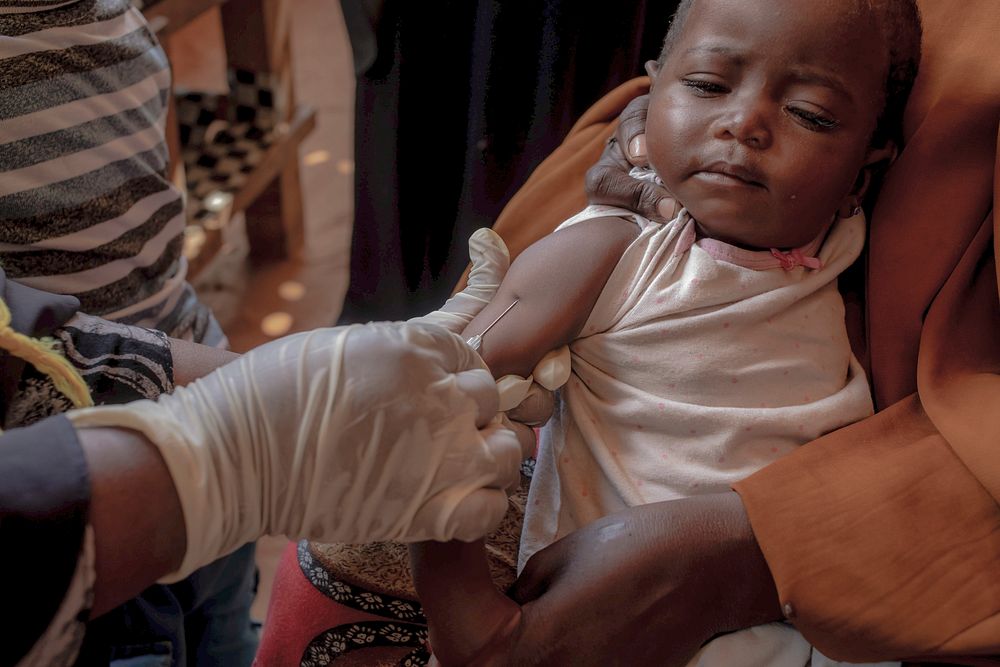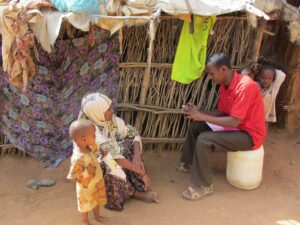In the quiet heartbeats of every community lies an untold story of health – the cries of newborns, the steady steps of the vaccinated child, and the shared smiles of mothers. Community health initiatives are the lifelines that weave these stories together. But how do we measure their success? How do we know if they’re truly making a difference? This is where the M&E system emerges as the unsung hero, offering clarity in the chaotic realm of public health, guiding us to see what works and where we can do better.
A well-designed Monitoring and Evaluation system is more than just a tool – it’s a bridge between vision and reality, intention and impact. It shows us if immunization campaigns are reaching the most vulnerable or if maternal health programs are truly saving lives. Today, we’ll explore the artistry and science of an M&E system, the framework that illuminates the path to healthier, stronger communities.
What Are Community Health Initiatives?
From vaccination campaigns that protect young lives to maternal health programs that safeguard the journey of motherhood, community health initiatives are the compassionate hands that reach out to those in need. They are tailored to address the unique health challenges faced by different populations, understanding that no two communities are the same. Each initiative is a song of hope, but without an a system, we risk playing it out of tune.
Why Monitoring & Evaluation Systems Are Essential
The M&E system is like the compass guiding these health efforts. Without it, we are lost in a sea of uncertainty, unable to measure if our actions are creating real change. Through systematic tracking and evaluation, the system tells us if we’re truly reaching the intended population, improving health outcomes, and using resources wisely. It’s not just about ticking boxes – it’s about creating a legacy of health that echoes for generations.
Imagine launching a massive vaccination drive but not knowing if it reached the most at-risk populations. That’s what happens when initiatives operate without a robust system. Accountability, transparency, and progress depend on it.
Core Components of a Strong M&E System
Building an effective system begins with intention. We must define what success looks like. Is it more vaccinated children? Fewer maternal deaths? The metrics we choose shape the story our data will tell. Then, we bring in the community – the heartbeat of the process. Engaging them in shaping the M&E system ensures it’s aligned with real-world needs and aspirations.
The M&E system isn’t static. It evolves. We need short-term goals, like increasing health facility visits, but we also keep an eye on long-term dreams, such as eradicating preventable diseases. When we marry purpose with process, the system becomes a beacon of clarity.
Key Indicators of Success in an M&E System
Indicators are the eyes of the M&E system – they see what we might otherwise miss. These are the lenses through which we can view the impact of a health initiative.
- Health outcomes indicators tell us about the end result. Have we reduced infant mortality? Are more mothers surviving childbirth?
- Process indicators help us understand the flow – how many people attended, how efficiently resources were used.
- Impact indicators look at the ripples in the pond. Has there been a noticeable improvement in community health? Is the overall quality of life improving?
Each piece of data is a thread in the intricate fabric the system weaves – giving us insight not just into the present, but also into the future.
Data Collection Methods: Feeding the M&E System
Data is the lifeblood of any M&E system. Without it, we cannot measure, we cannot learn, we cannot grow. How do we collect this precious data? The methods are as varied as the communities they serve:
- Surveys and questionnaires provide hard numbers – cold but clear.
- Focus groups and interviews bring warmth to those numbers, giving us context and depth.
- Administrative data and health records offer long-term insights into trends.
- Community-based participatory research invites those who live the reality to help shape the narrative.
By combining these approaches, the system becomes more than a data machine – it becomes a storyteller, narrating the successes and the gaps in our efforts.
(External resource: Learn more about community-based participatory research on NIH’s website.)
Analyzing Data with the M&E System
Once we gather the data, the next step is turning it into actionable insights. The M&E system uses a variety of tools to analyze and interpret this data:
- Statistical analysis software like SPSS gives us clarity amidst the chaos of numbers.
- Qualitative analysis tools such as NVivo help us make sense of words, feelings, and feedback from the community.
- GIS tools add a geographic layer, mapping out health trends and helping to visualize where the need is greatest.
With these tools in hand, the system becomes a lens through which we can see the truth of our impact.
The Soul of Community Engagement in an M&E System
The most powerful system is one that is deeply rooted in the community. It’s not just about collecting data from them; it’s about involving them in every step of the journey. When communities participate in designing and implementing the M&E system, they feel ownership. Their voices become a vital part of the health story we’re trying to tell.
Their participation ensures that the metrics we track, the data we collect, and the stories we tell reflect the true needs and aspirations of the community.
Challenges in the M&E System
Despite its immense value, implementing a successful M&E system is not without its challenges. Access to remote areas, language barriers, and resource limitations can hinder data collection. Cultural nuances may also affect how data is interpreted. Furthermore, the system requires time, expertise, and funding – all of which may be scarce in resource-poor settings.
However, overcoming these challenges is what makes an system so vital. By pushing through these difficulties, we can ensure that every initiative is as effective and impactful as possible.
Ethical Considerations in M&E Systems
Ethics is the invisible thread that holds an M&E system together. Every piece of data represents a real human life. Obtaining informed consent, protecting privacy, and maintaining confidentiality are non-negotiable.
An ethically sound system also ensures that no data is manipulated to fit preconceived notions. It presents an unvarnished truth, even if that truth is difficult to face.
Case Study: A Glimpse into an Immunization Campaign’s M&E System
Consider an immunization campaign aimed at reducing measles in a rural community. The M&E system would track both health outcomes (e.g., reduced measles cases) and process indicators (e.g., participation rates, healthcare staff engagement). Data collection might involve surveys at health clinics and household interviews, while GIS mapping highlights areas with low vaccination coverage.
The results? Success might look like a 90% immunization rate and a significant reduction in cases. But the system would also identify challenges – perhaps certain areas are still under-vaccinated, leading to a targeted follow-up campaign.
Tailoring the M&E System to Different Initiatives
Every health initiative is different, and so must be its M&E system. Maternal health programs require tracking prenatal care and safe delivery rates, while mental health initiatives may focus on access to services and stigma reduction. No single approach fits all, but a flexible, responsive system ensures that each program is monitored according to its unique goals and challenges.
Using M&E System Findings for Continuous Improvement
Once data is collected and analyzed, the M&E system must present findings in a way that drives action. Stakeholders can use dashboards or detailed reports to track progress, and healthcare providers can use the insights to fine-tune their efforts.
More than that, successful initiatives identified through the system can be scaled and adapted to other communities. This ripple effect ensures that the impact of the M&E system extends far beyond the original scope of the project.
(External resource: Find out more about scaling health initiatives on WHO’s website.)
Conclusion
The M&E system is the silent conductor of community health initiatives, orchestrating the complex symphony of data, feedback, and insight. Without it, we are blind to our impact, unsure of whether we are truly creating the change we seek. With it, we can confidently say that our actions are not just hopes cast into the wind – they are concrete steps toward a healthier, brighter future for all.
(Our M&E services: M&E System Services in Uganda)
FAQs
- Why is an M&E system important for community health initiatives?
- The M&E system provides the structure to measure, track, and improve the effectiveness of health interventions.
- How does an M&E system engage communities?
- By involving community members in designing and implementing the system, ensuring the data reflects real needs and priorities.
- What are common challenges in implementing an M&E system?
- Data collection challenges, cultural differences, and resource limitations can make it difficult to implement an effective M&E system.
- How can data from an M&E system be used for future health initiatives?
- Insights from the M&E system can be scaled to other communities, improving the overall reach and impact of successful programs.
- What ethical considerations are there in an M&E system?
- Protecting privacy, obtaining informed consent, and maintaining data integrity are key ethical considerations for any M&E system.






